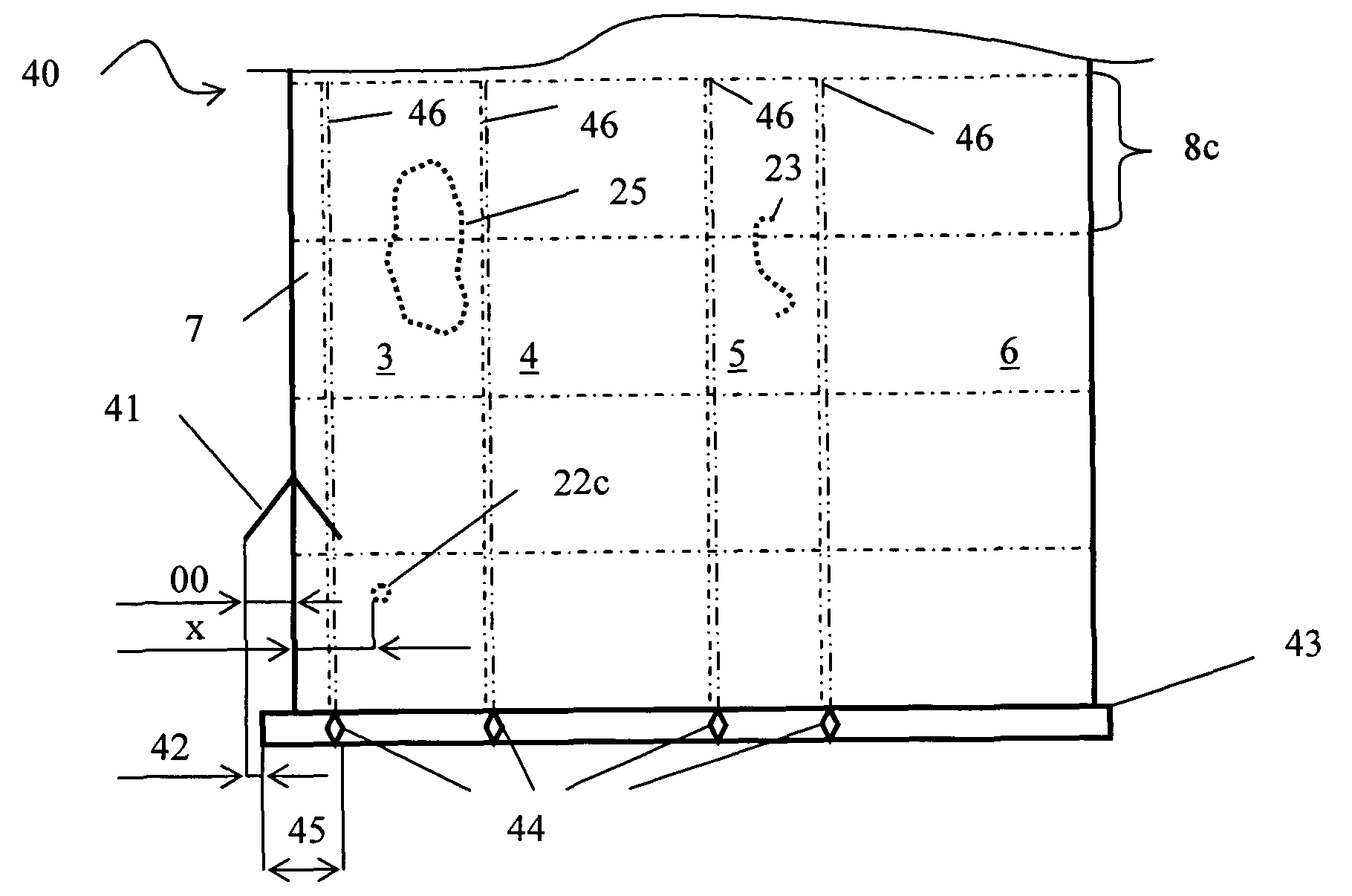Method for creating a cutting plan for a strip-like material
a cutting plan and strip-like material technology, applied in the field of creating a cutting plan for strip-like materials, can solve the problems of flat product stretching or shrinking, loss of length direction, trim-loss problem or cutting stock problem, etc., to reduce the waste of strip-like materials, maximize the quality yield, and increase the correspondence
- Summary
- Abstract
- Description
- Claims
- Application Information
AI Technical Summary
Benefits of technology
Problems solved by technology
Method used
Image
Examples
Embodiment Construction
[0049]The method for creating a cutting plan for a strip-like material is applicable to many manufacturing processes, where for instance paper, board, steel and other metals, flat-sheet chemicals like polymers and film, plastics, woven and non-woven textiles, or any other flat end-product is manufactured. The detailed description with the appended drawings describes an application in the paper industry.
[0050]In FIG. 1 a cutting plan 1 for a length of a paper web is shown. The plan is made in the production planning phase in a paper mill. The first cutting pattern 2 produces four rolls of paper 3-6 and a trim waste 7 side by side in the cross direction of the paper web. The number of sets to be cut is four 8a-8d. The second cutting pattern 9 produces five rolls of paper 10-14 and a trim waste 15 side by side in the cross direction of the paper web. The number of sets to be cut is two 16a, 16b. A set change which is the removal of completed rolls and starting of new rolls is between t...
PUM
| Property | Measurement | Unit |
|---|---|---|
| distances | aaaaa | aaaaa |
| distance | aaaaa | aaaaa |
| distance | aaaaa | aaaaa |
Abstract
Description
Claims
Application Information
 Login to View More
Login to View More - R&D
- Intellectual Property
- Life Sciences
- Materials
- Tech Scout
- Unparalleled Data Quality
- Higher Quality Content
- 60% Fewer Hallucinations
Browse by: Latest US Patents, China's latest patents, Technical Efficacy Thesaurus, Application Domain, Technology Topic, Popular Technical Reports.
© 2025 PatSnap. All rights reserved.Legal|Privacy policy|Modern Slavery Act Transparency Statement|Sitemap|About US| Contact US: help@patsnap.com



